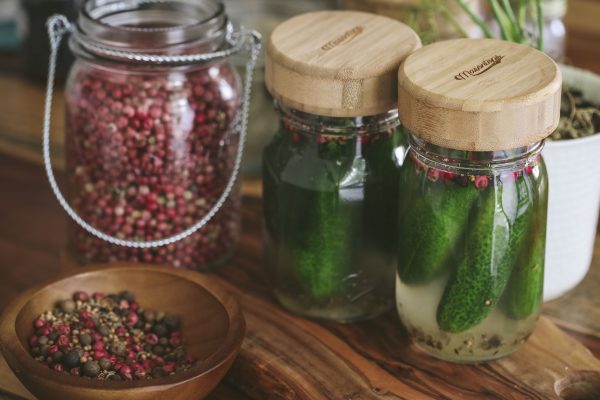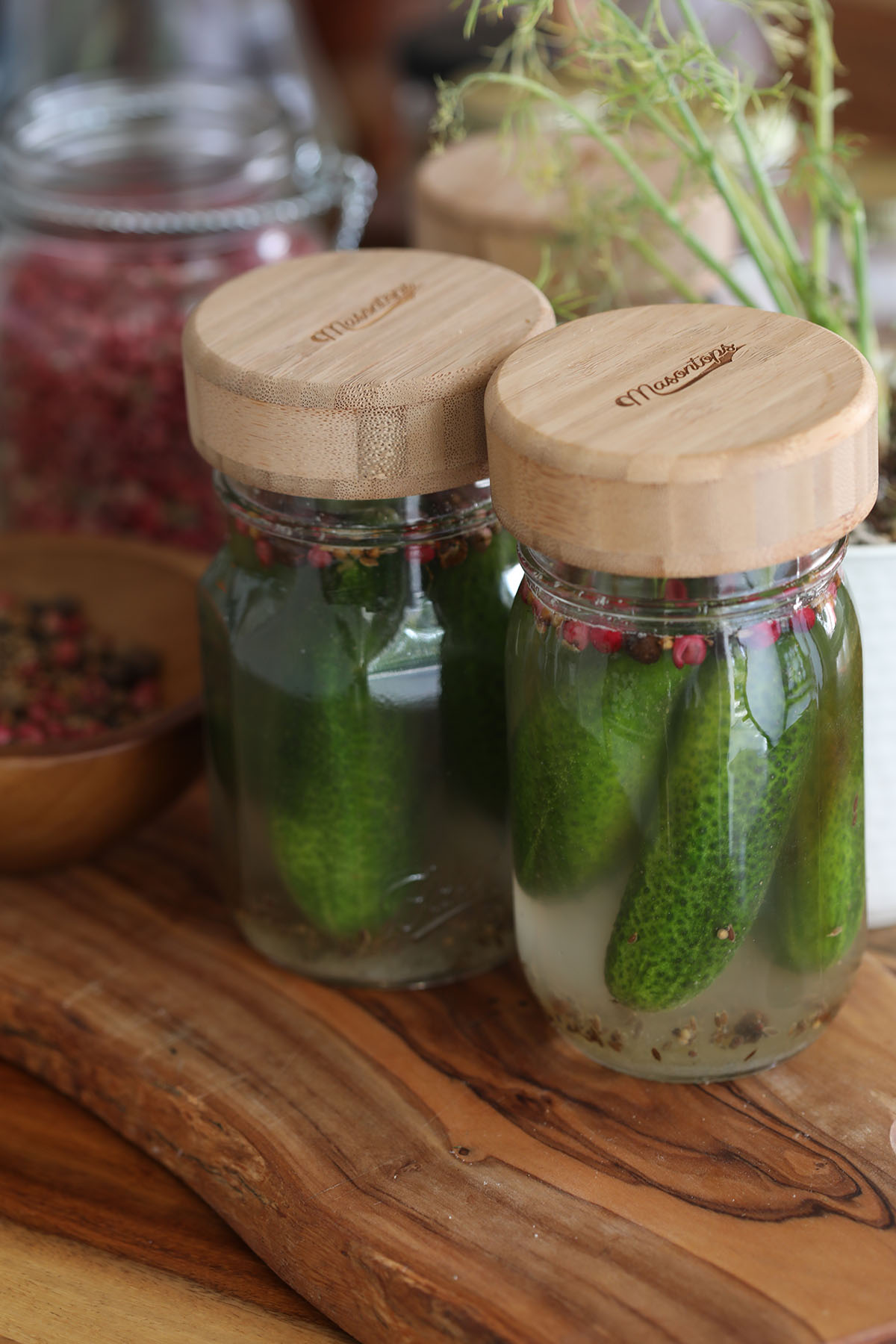Pink Peppercorn Pickles
I have two big pink peppercorn trees in my yard. I dry the peppercorns and use them in my pepper grinder and also when I make pickles. I love the mild pepper taste and I like to see them floating in the jar while my pickles ferment. I like to make these in quart jars. but you can use a half gallon jar, or pint jars too. Just make sure each jar gets an even amount of the spices, seasonings, and culture. Check out my blog on how to make pickles crunchy!
Servings: 2 quarts
Ingredients
- 1/4 teaspoon Veggie Starter Culture – or 1/4 cup kefir whey
- 1 cup Water, spring or filtered with minerals – to mix starter culture
- 1-1/2 pounds pickling cucumbers – 3- to 5-inch is ideal. Enough to fill two quart jars
- 4 tablespoons Celtic Sea Salt
- 2 cloves garlic – peeled and chopped
- 1 tablespoon whole dill seed
- 1 tablespoon whole coriander seed
- 1 tablespoon pink peppercorns
- 1/2 teaspoon red pepper flakes
- 2 sprigs dill weed – 2 inch pieces
- filtered or spring water with minerals
- ¼ teaspoon Calcium Chloride – optional see note*
Materials
Every ingredient with a link was selected by me to make it easier for you. I may receive a small affiliate commission if you buy something through my links. Thank you! ❤️
Instructions
- If using the starter culture, stir together the culture and water. Let the mixture sit while you prepare the ingredients. If using kefir whey, add it when the recipe calls for culture.
- Mix all seasonings and spices in a bowl with a spout for easy pouring.
- Place cucumbers in jar, leaving two inches at top of the jar.
- Add seasonings and spices to each jar dispersing them evenly between the two.
- Add Cutting Edge Cultures, or kefir whey, evenly to each jar and cover with water, leaving an inch or two at the top.
- Seal the container and let it sit on your kitchen counter, out of direct sunlight, for three days. After three days, place the container in the refrigerator.
- Check the vegetables every day to make sure they are fully submerged in the water. If they have risen above the water, simply push them down so they are fully covered by the water. If any white spots formed because the veggies rose above the water, do not worry. Remember, this isn’t harmful. Just scoop out the vegetables that have the white spots on them and push the rest back under the water.
Notes
Storage note: These pickles can be kept in a covered airtight jar in the refrigerator for up to nine months.
Calcium chloride is a helpful ingredient that helps pickles stay crunchy and preserve their texture. I love how it helps my pickles stay crisp and adds a salty taste to pickles and other foods without increasing their sodium content. I noticed it in many popular fermented pickles in stores and decided to research it and try it myself with great results.Calcium chloride is an inorganic compound—a salt with the chemical formula CaCl2. It has a long history of safe use in food and is widely recognized as a safe food additive by major regulatory bodies worldwide. FDA Approval: The U.S. Food and Drug Administration (FDA) has granted calcium chloride Generally Recognized as Safe (GRAS) status for its intended uses in food.




